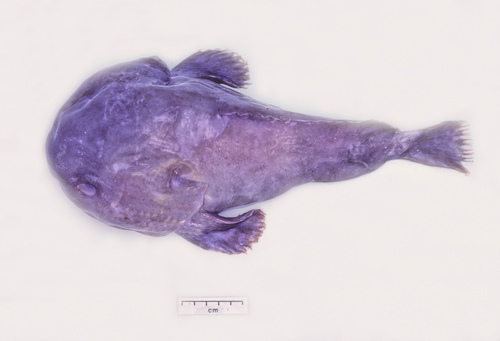
Blobfish
The Bluefin Tuna, belonging to the Thunnus genus, are among the most remarkable fish in the ocean. Known for their incredible speed, size, and migratory habits, these fish play a critical role in marine ecosystems and are of significant commercial importance. They are apex predators.
10 130 years
Lifespan
30 cm
Length
Least Concern
Conservation Status
1 km/h
Swimming speed
Carnivorous
Diet
Sedentary
Migration
Appearance Overview
The Bluefin Tuna is renowned for its large, streamlined body, built for speed and endurance in the water.
Color
Dark metallic blue on top, with a silvery-white underside
Fins
Two dorsal fins, the first depressible; a series of small finlets behind the second dorsal and anal fins
Body
Torpedo-shaped, designed for efficient swimming
Length
Up to 10 feet (3 meters), commonly 6.5 feet (2 meters)
Weight
Up to 1,500 lbs (680 kg), commonly 550 lbs (250 kg)
Diet
Carnivorous, feeding on a variety of fish, squid, eels, and crustaceans
Feeding Behavior
Highly active predators, Bluefin Tuna use their speed and agility to hunt. They often feed in coordinated schools, especially when targeting smaller prey.
Social Behavior
Highly migratory, forming large schools, particularly during spawning. They exhibit complex social behaviors, including cooperative hunting.
Commercial Relevance
Extremely high value, particularly in sushi and sashimi markets. The price for premium specimens can reach extraordinary levels at auctions.
Conservation measures
International fishing quotas, restrictions on fishing gear, and marine protected areas. Efforts also focus on sustainable aquaculture practices.
Status
Varies by species; Atlantic Bluefin is Endangered, Pacific Bluefin is Vulnerable, and Southern Bluefin is Critically Endangered.
Threats
Overfishing is the primary threat, driven by high demand in seafood markets. Climate change and habitat degradation also impact populations.
Habitat Distribution
Depth Range
Surface waters down to 1,600 feet (500 meters), with some variations between species and life stages
Geographic Range
Atlantic Ocean, Pacific Ocean, Indian Ocean, and the Mediterranean Sea
Preferred Environment
Primarily pelagic, inhabiting temperate and subtropical waters. They are highly migratory, often traversing entire oceans.
Reproduction and Life Cycle
Breeding Habits
Spawns in specific areas depending on the species; for instance, Atlantic Bluefin Tuna have two main spawning grounds: the Gulf of Mexico and the Mediterranean Sea. Spawning occurs in warm waters.
Development Stages
Eggs hatch into larvae that drift with plankton. Rapid growth follows, with juveniles forming schools. They gradually mature into large, migratory adults.
Fecundity
Females are highly fecund, capable of producing up to 30 million eggs per spawning season, depending on size and condition.
Maturity Age
Varies by species; Atlantic Bluefin Tuna typically mature between 4-8 years, while Southern Bluefin may take longer.
Faqs about Blobfish
Can Bluefin Tuna be consumed?
Yes, but it's crucial to ensure it comes from sustainable sources, given their conservation status.
How fast can Bluefin Tuna swim?
Bluefin Tuna are among the fastest fish, capable of short bursts of speed up to 43 mph (70 km/h).
What is the lifespan of a Bluefin Tuna?
They can live up to 40 years, though this varies between different Bluefin species.
How can you identify a Bluefin Tuna?
Their large size, streamlined body, dark blue upper body, and silvery underside are key identifiers.
Where are Bluefin Tuna found?
They are found in the Atlantic, Pacific, and Indian Oceans, including the Mediterranean Sea.
Do Bluefin Tuna migrate?
Yes, they are known for their long-distance migrations across oceans, often for breeding and feeding.
What do Bluefin Tuna eat?
They primarily eat fish, squid, and crustaceans, using their speed to catch prey.
Why are Bluefin Tuna endangered?
Overfishing is the biggest threat, driven by high demand for their meat.
How many eggs do Bluefin Tuna lay?
Females can release millions of eggs each spawning season, contributing to their high fecundity.
What conservation efforts are in place for Bluefin Tuna?
Efforts include fishing quotas, marine protected areas, and research into sustainable aquaculture.
Copyright @ Nature Style Limited. All Rights Reserved.
 English
English